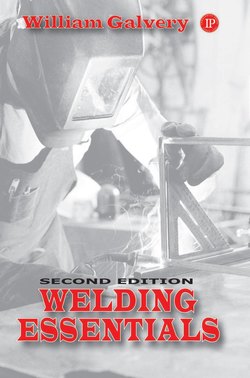Читать книгу Welding Essentials - William Galvery - Страница 13
На сайте Литреса книга снята с продажи.
ОглавлениеChapter 5
Shielded Metal Arc Welding
I hear and I forget.I see and I remember.I do and I understand.
Confucius
Introduction
Most accounts trace the history of electric welding to 1801 when Sir Humphrey Davy discovered an arc could be created with high-voltage electric current by bringing two terminals near each other. In 1881 Augustine de Mertines began experimenting with arc welding; these experiments were used to weld various parts of a lead battery plate using a carbon arc as the heat source. Carbon arc welding patents were issued to N. de Benardos, a Russian, May 17, 1887. Between 1889 and 1908 the N. G. Slavinoff system of arc welding, where the carbon electrode was replaced with a bare metal electrode was developed. American patents on this metal arc process were issued to Charles Coffin in 1889. Oscar Kjellberg, founder of ESAB of Sweden, applied a coating to the bare electrode between, 1907 and 1910, which began the development of coated metal arc welding electrodes.
By 1912 Lincoln Electric, and three other well-established manufacturers, offered the first arc welding machines. It remains an important process for structural steel and pipe line welding. Decision makers in these critical industries use it because it is so reliable. Even with thousands of welds made in adverse conditions, on startup the trans-Alaska pipeline did not have a single weld failure. Arc welding is popular for industrial, automotive, and farm repair because its equipment is relatively inexpensive and can be made portable. More welders have learned this process than any other. Although it will be around for many years, and its annual filler metal poundage continues to grow, it is declining in importance as wire feed welding processes continue to gain popularity and market share. We will cover theory, equipment, electrode rod classification and selection, and safety.
Process Names
What is the AWS designation for welding with a flux coated electrode?
Shielded metal arc welding (SMAW) is the AWS designation.
What are other common names for SMAW?
SMAW is also commonly called arc welding, stick welding, and stick electrode welding.
What equipment makes up a SMAW setup?
•Constant-current (CC) welding power supply
•Electrode holder, lead, and its terminals
•Ground clamp, lead, and its terminals
•Welding electrodes. See Figure 5–1.
Figure 5–1Shielded metal arc welding machine
What additional equipment may be found in an SMAW process welding station?
•Booth walls or light shields
•Jigs, fixtures, and positioning devices
•Stool
•Ventilation system
•Workbench
Process
How does the SMAW process work?
